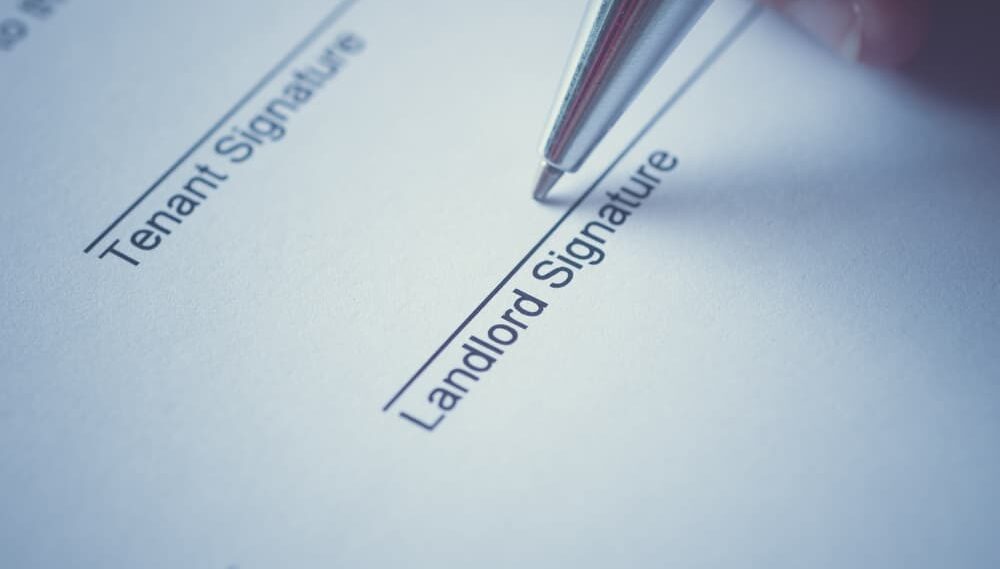
When a tenant gets hurt in their apartment or building, they may wonder whether their landlord bears any responsibility for the accident and their injuries.
The duty of landlords to furnish safe, habitable residences for their tenants, combined with any contractual maintenance duties that tenants may have under their leases, can make a landlord liable for a tenant’s injuries.
A tenant may have an injury claim against their landlord after an accident caused by a hazardous condition that the landlord either created or had a legal duty to repair or remove.
However, proving a landlord’s responsibility for tenant injuries involves complex facts and legal issues.
An injured tenant can best protect their rights and interests by hiring an experienced premises liability lawyer to investigate the accident, secure evidence, and review the facts to determine whether the landlord bears any responsibility.
The Landlord-Tenant Relationship
In the residential landlord-tenant relationship, a property owner grants a tenant exclusive possession of a residential unit and access to common areas shared by other tenants.
Landlords and tenants enter leases to govern their relationship. In most cases, parties will sign a written lease that lasts for a fixed time, although landlords and tenants can also agree to a periodic lease (frequently called a month-to-month tenancy) or have an oral lease agreement.
State and local laws also govern landlord-tenant relationships. These laws and regulations may impose various maintenance responsibilities upon landlords, including the obligation to deliver and maintain leased premises in a habitable condition and respond promptly to tenant maintenance and repair requests.
Common Examples of Tenant Accidents and Injuries
Tenants can get into accidents due to hazardous conditions in their apartments, condos, or townhouses.
Some examples of the most common accidents in leased residential premises include:
- Slip and fall or trip and fall accidents
- Contact with heat sources, such as stoves, steam, or scalding water
- Fires or explosions
- Electrocution
- Elevator accidents
- Swimming pool accidents
- Parking lot or garage accidents
- Negligent security and assaults or criminal violence
- Mold or other toxic exposure
- Building or structural collapses
Injuries that tenants may suffer due to accidents in their home or apartment building include:
- Burns
- Electrocution injuries
- Broken bones
- Soft tissue injuries such as ligament, tendon, muscle, or spinal disc injuries
- Internal injuries and bleeding
- Traumatic brain injuries
- Facial injuries and scarring
- Vision/hearing damage
- Diseases caused by exposure to toxic substances, viruses, bacteria, or mold
Landlord Maintenance Responsibilities
Although a landlord’s and tenant’s maintenance responsibilities can vary depending on the terms of their lease, landlords frequently have the same general set of maintenance responsibilities.
Typically, landlords have a responsibility to regularly inspect and maintain the common areas of a multi-unit property. Examples of multi-unit property areas include exterior ingress and egress, common hallways or walkways, common staircases, elevators, and other shared amenities such as central cooling and heating systems, laundry rooms, swimming pools, or fitness rooms.
Although tenants may advise landlords of any hazards they see in common areas, the landlord bears the ultimate responsibility of inspecting the common areas of their property and maintaining and repairing issues to prevent or remove dangerous conditions.
Landlords also must respond to tenant requests to repair various features of the leased premises for which the landlord is responsible.
While tenants usually have the responsibility to maintain ordinary items, like light bulbs, landlords usually have a responsibility to maintain or repair appliances that remain with the leased premises (such as stoves or refrigerators), utilities (including electrical, cooking gas, heating, cooling, and water), and structural elements like staircases inside a leased unit.
Landlords must respond to repair requests within a reasonable time, although what constitutes a reasonable time depends on the specific circumstances. Landlords may schedule repairs inside a tenant’s leased premises at the tenant’s convenience. However, leases usually give landlords the right to enter the premises during regular business hours to conduct repairs.
Finally, landlords must deliver a unit to a tenant in a habitable condition. Between leases, a unit reverts to the landlord’s possession, which allows the landlord to enter and inspect the premises and conduct any maintenance or repairs necessary to bring the unit up to a habitable condition.
Habitability requires a unit to have working electricity, water, sewer, and (in some places) heating and cooling. Units must not have hazardous conditions that can cause an accident (like broken stairs) or toxic substances that may pose an imminent threat, such as mold.
The law imposes an implied warranty of habitability on all residential leases. When a landlord delivers a unit in uninhabitable condition, or the unit becomes uninhabitable due to lack of maintenance, the landlord has breached the lease, and the tenant has the right to vacate the premises.
Tenant Maintenance Responsibilities
Leases frequently impose various maintenance responsibilities upon tenants to prevent dangerous conditions from arising within their premises.
First, leases may require tenants to notify the landlord of any potentially hazardous conditions within the leased unit as soon as the tenant discovers the condition. A tenant who fails to report a hazard and later gets injured by that hazard may have a weaker injury claim against their landlord.
Leases also usually require tenants to keep their units clean and tidy, which helps prevent potentially hazardous conditions like mold growth or insect and rodent infestation.
Proving a Landlord’s Liability for Accident Injuries
When a tenant suffers injuries due to a hazardous condition that the landlord bore responsibility to maintain, the tenant may have a viable injury claim against their landlord.
Showing that a landlord bears liability for a tenant’s injuries requires proof of the landlord’s negligence.
Negligence is a legal theory under which a person who breaches a duty of care to another person is liable for injuries and harm resulting from their breach. Proving a landlord’s negligence requires the tenant to show that the landlord owed them a duty of care to maintain or repair the hazardous condition that caused the accident, whether under the lease, by law, or by public policy.
The tenant must show that the landlord breached their duty of care, which usually requires proving that the landlord knew about the dangerous condition or should have discovered it through reasonably diligent inspection. Furthermore, the tenant must prove that the landlord had sufficient opportunity to remedy the hazard.
In many cases, a tenant must also prove that the landlord should have foreseen that a hazardous condition would have caused the tenant’s injuries.
For example, a landlord could foresee that a tenant might have an accident due to a dangerous condition in the tenant’s unit or the common areas of the property. However, a hazard in other areas of the property that tenants should not have access to, such as the building’s roof or a mechanical/boiler room, would not foreseeably cause injuries to a tenant.
Succeeding in an injury claim against a landlord may require various pieces of evidence, such as:
- Accident scene photos and videos
- Eyewitness testimony or statements from other tenants or passersby
- Written correspondence or contemporaneous notes of telephone or in-person conversations with the landlord regarding maintenance or repairs
- Surveillance footage from common areas
- Inspection, maintenance, or repair records
- Medical records of treatment of the tenant’s injuries and expert medical testimony
- Reports and testimony from accident reconstruction or engineering experts
The Role of Homeowners’ and Renters’ Insurance
Homeowners’/commercial residential property and renters’ insurance may play a role in a premises liability claim involving a multi-unit residential property.
Property insurance policies frequently include liability coverage for personal injuries that occur on the property or due to a property condition. An injured tenant may have the right to turn to their landlord’s homeowners’ or commercial property liability insurance to seek compensation for medical bills, lost income, costs of long-term care, or pain and suffering due to the accident and their injuries.
Common Landlord Defenses to Tenant Injury Claims
Depending on the circumstances of a tenant’s accident, a landlord may assert various factual or legal defenses to liability for the tenant’s injuries and losses. First, a landlord may argue that the accident was in fact the tennant’s fault and that the landlord was not responsible for their injuries.
A landlord may assert that they had no notice of the dangerous condition of the tenant’s premises as a defense to an injury claim. Because tenants have exclusive possession of their leased premises, they must inform their landlord when a dangerous condition arises in their home so that the landlord knows that they need to remedy that condition.
When a tenant neglects to inform their landlord of a hazardous condition, the landlord might not bear liability for injuries that result from an accident.
Finally, a landlord might argue that the tenant had a contractual responsibility under the lease to fix or remedy the hazardous condition that caused the accident.
A lease can make a tenant responsible for specific maintenance or repairs. When an accident occurs because the tenant fails to conduct maintenance or repairs they had responsibility for under their lease, an injury claim against the landlord may fail.
However, various circumstances can alter the effectiveness of these defenses. For example, if the hazardous condition existed before the tenant took possession of the premises, you could hold the landlord liable for the accident because the landlord had possession of the premises before the tenant’s lease began and should have discovered and remedied the hazardous condition.
After Getting Hurt in Your Leased Property or in an Apartment Building or Condo/Townhouse Complex, Call a Lawyer
After an accident in your leased unit or apartment building, you may take legal action if the accident occurred due to your landlord’s negligence.
To put yourself in the best position to pursue compensation for your injuries:
- Report the accident to your landlord as soon as possible. Request a copy of any accident or incident reports your landlord or the property manager prepares.
- Ask your landlord to preserve any surveillance camera footage of the accident if it happened in a common area.
- After seeking medical care, follow your doctor’s treatment plan and keep all follow-up appointments. This will increase the chance that your injuries will heal properly.
- Obtain copies of your medical records, which can be crucial evidence.
- Keep the clothing and shoes you wore at the time of the accident.
- Keep any bills, invoices, or receipts for expenses you incur due to your injuries. Gather copies of your income statements if you miss work or have reduced earnings while recovering from your injuries.
- Talk to other tenants to see if they witnessed the accident or have any relevant information or testimony.
Finally, contact a premises liability lawyer as soon as possible to discuss your legal options and the next steps you can take to pursue financial relief.
Contact a Premises Liability Lawyer to Recover Compensation After an Accident in Your Apartment

Mickey Fine, Premises Liability Lawyer
Depending on the circumstances, if you suffered an injury in an accident in your apartment, you could hold your landlord liable for your injuries. If a hazardous condition caused the accident, and your landlord should have fixed it but failed to do so, you could hold them legally responsible.
Because these cases require a lot of evidence, you need effective, knowledgeable legal representation to pursue financial relief and accountability. An experienced premises liability lawyer can help you seek compensation for medical bills, lost income, and other accident-related expenses.
A Bakersfield personal injury attorney will understand state and local regulations and laws that apply to your case. Contact a lawyer near you for help recovering compensation after an accident in your apartment.
